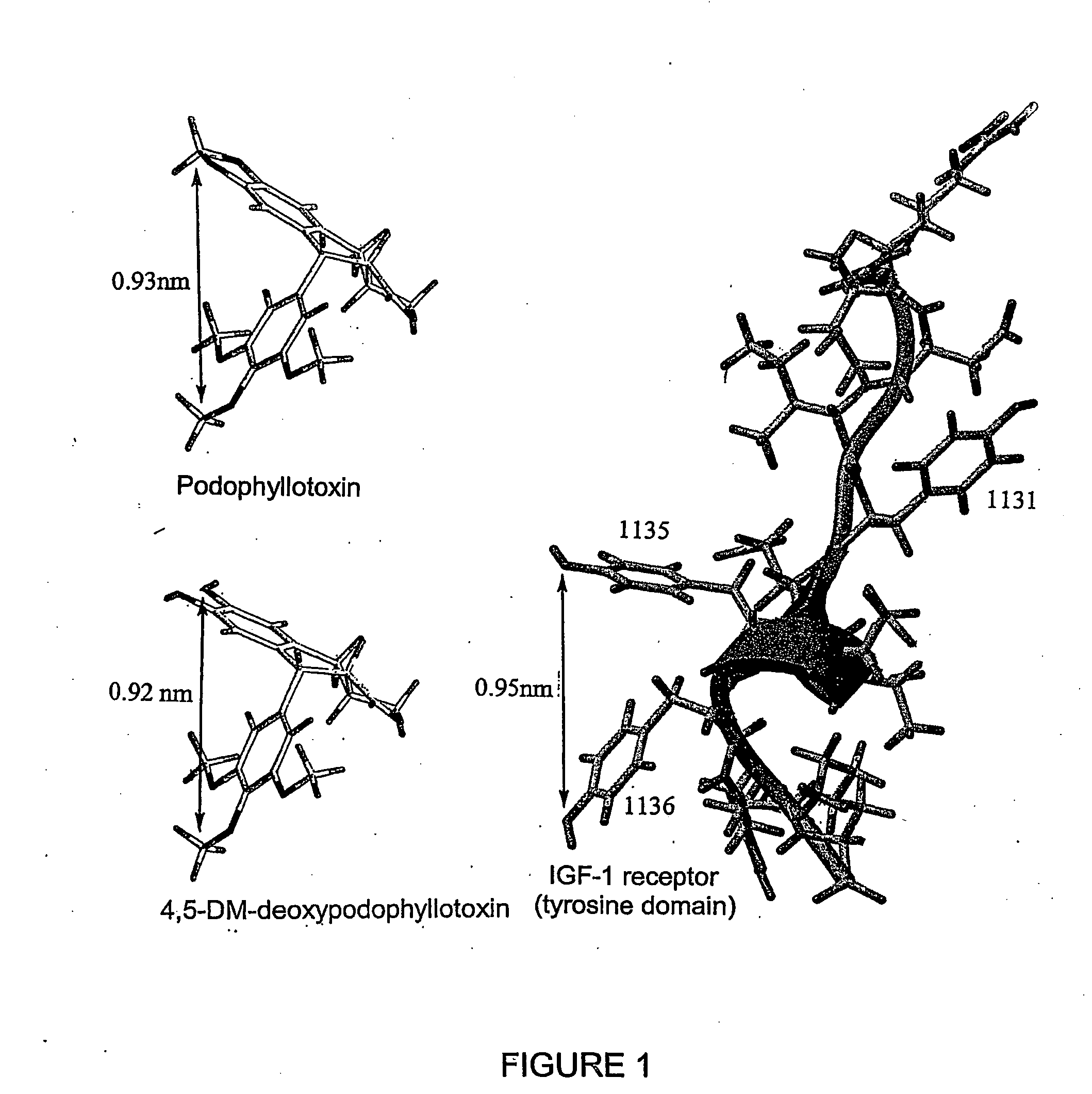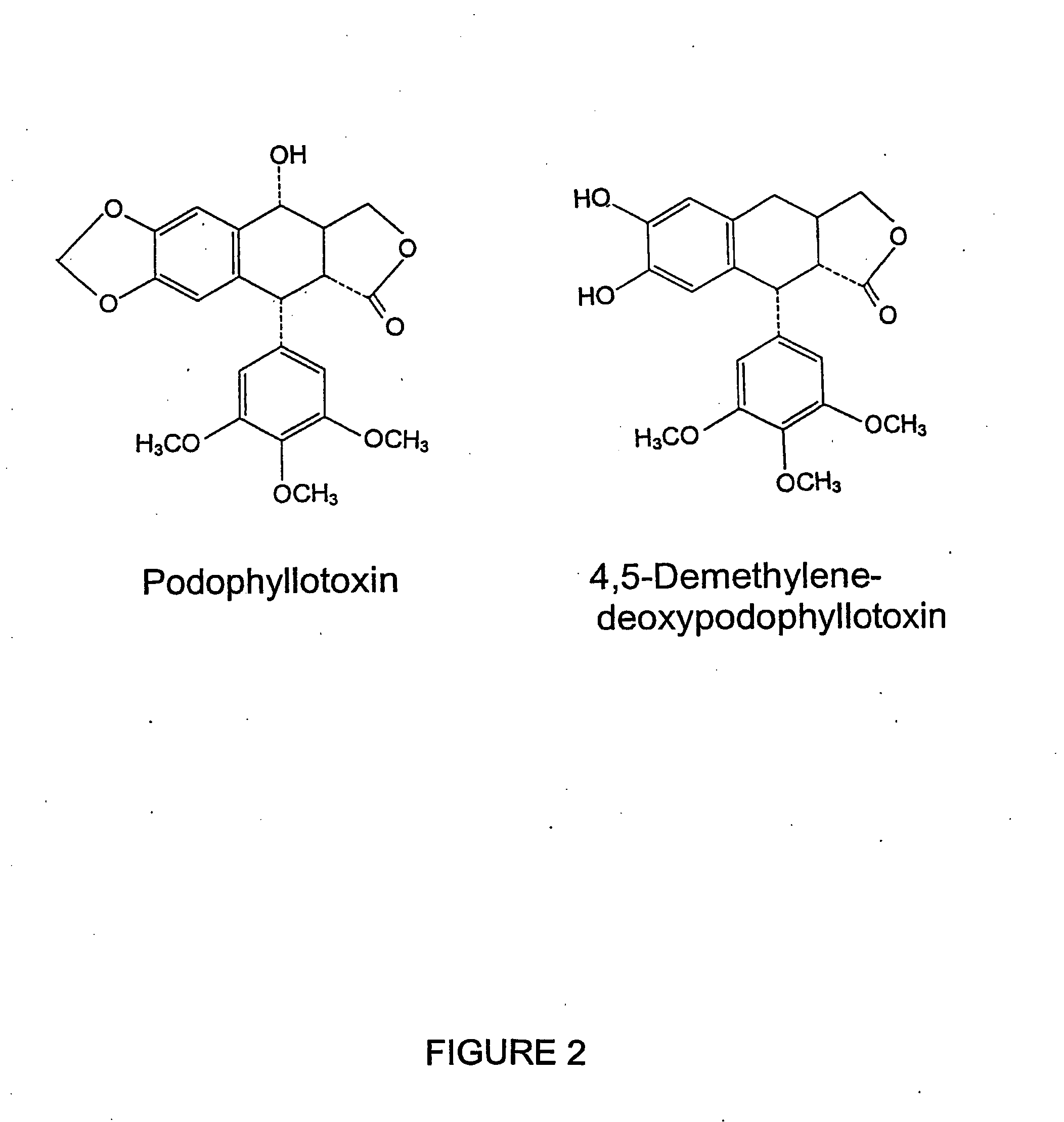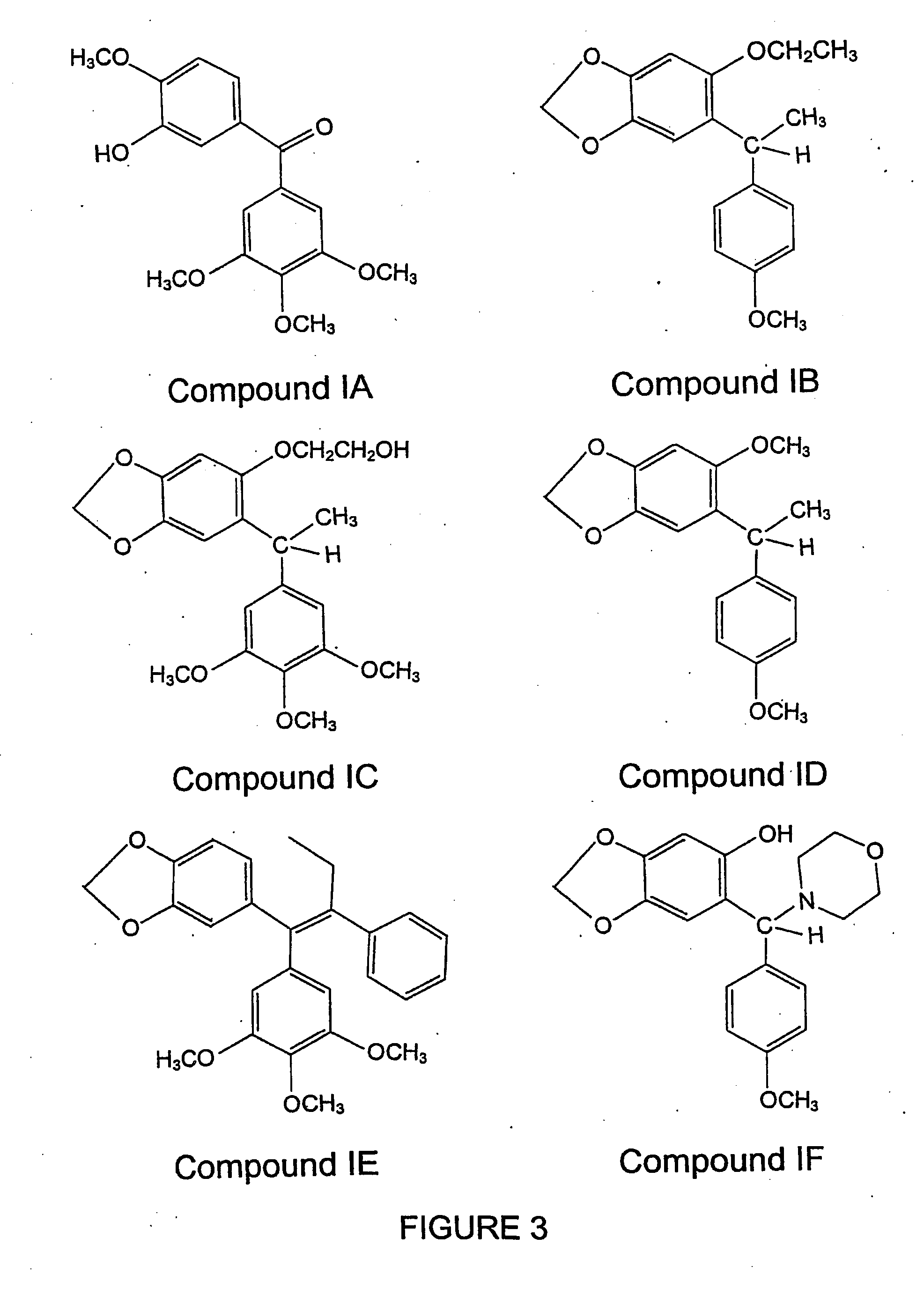Podophyllotoxin derivatives as igf-1r inhibitors
a technology of igf-1r and derivatives, which is applied in the direction of drug compositions, active ingredients of phosphorous compounds, cardiovascular disorders, etc., can solve the problems of limited usefulness and cross-reaction with insulin receptors
- Summary
- Abstract
- Description
- Claims
- Application Information
AI Technical Summary
Problems solved by technology
Method used
Image
Examples
experiment 1
Effect of 4,5-demethylene-deoxypodophyllotoxin and podophyllotoxin on phosphorylation of IGF-1R in Cultured Melanoma Cells
[0095] Melanoma cells (line FM55) were seeded in 6-cm dishes, at a concentration of 10,000 cells / cm2 in Minimal Essential Medium supplemented with 10% fetal calf serum (FCS). When the cells reached a density of 65,000 cells / cm2 in the dishes, they were treated for 1 h with 4,5-demethylene-deoxypodophyllotoxin (0.7 μM) and podophyllotoxin (used as a positive control; 0.7 μM). Treatment with 0 μM represents untreated controls. The cells were then harvested and subjected to immunoprecipitation of the IGF-1R. The immunoprecipitates, containing purified IGF-1R, were fractionated by gel electrophoresis. Phosphorylation of IGF-1R was detected by an anti-phosphotyrosine antibody using Western blotting. The obtained signals represent phosphorylated IGF-1R and the intensity of signals represents amounts of phosphorylated IGF-1R. Details of the methods used are described ...
experiment 2
Effect of 4,5-demethylene-deoxypodophyllotoxin on phosphorylation of IGF-1R in a Cell-Free System
[0096] We isolated the receptor and determined the effects of 4,5-demethylene-deoxypodophyllotoxin on IGF-1R catalyzed substrate tyrosine phosphorylation and IGF-1R autophosphorylation in-vitro. 4,5-Demethylene-deoxypodophyllotoxin significantly (by about 35% at a concentration of 0.5 μM) decreased the pTG substrate phosphorylation by the IGF-1 receptor. In contrast, it failed to interfere with substrate phosphorylation of epidermal growth factor receptor and insulin receptor tyrosine kinases, as well as that of other ‘non-IGF-1R kinases’, which were obtained by immunodepletion of IGF-1R (data not shown). Podophyllotoxin, used here as a positive control, produced similar result, i.e. had only effect on IGF-1R. In the next set of experiments we found that both podophyllotoxin and 4,5-demethylene-deoxypodophyllotoxin inhibited autophosphorylation of IGF-1R in vitro. A stronger response w...
experiment 3
[0098] Specificity of 4,5-demethylene-deoxypodophyllotoxin and podophyllotoxin on Various Receptor Tyrosine Kinases in Cultured Cells
[0099] FM55 melanoma cells were cultured in the same way as described in Experiment 1. When reaching a density of 65,000 cells / cm2 in the dishes, they were treated for 1 h with 0 (control) and of 4,5-demethylene-deoxypodophyllotoxin (0.7 μM) and podophyllotoxin (positive control; 0.7 μM). The cells were then isolated and subjected to immunoprecipitation of the IGF-1R, fibroblast growth factor receptor (FGFR), platelet-derived growth factor receptor (PDGFR), epidermal growth factor receptor (EGFR), insulin receptor (IR) and insulin substrate-1 (IRS-1) using antibodies to respective molecules. IRS-1 is a substrate of IGF-1R, and therefore its phosporylation is dependent on phosphorylated IGF-1R. The results are shown in Table 2.
[0100] Gelelectrophoresis, Western blotting and quantification of the different signals were performed as described above.
TA...
PUM
| Property | Measurement | Unit |
|---|---|---|
| apparent angle | aaaaa | aaaaa |
| distance | aaaaa | aaaaa |
| distance | aaaaa | aaaaa |
Abstract
Description
Claims
Application Information
 Login to View More
Login to View More - R&D
- Intellectual Property
- Life Sciences
- Materials
- Tech Scout
- Unparalleled Data Quality
- Higher Quality Content
- 60% Fewer Hallucinations
Browse by: Latest US Patents, China's latest patents, Technical Efficacy Thesaurus, Application Domain, Technology Topic, Popular Technical Reports.
© 2025 PatSnap. All rights reserved.Legal|Privacy policy|Modern Slavery Act Transparency Statement|Sitemap|About US| Contact US: help@patsnap.com



